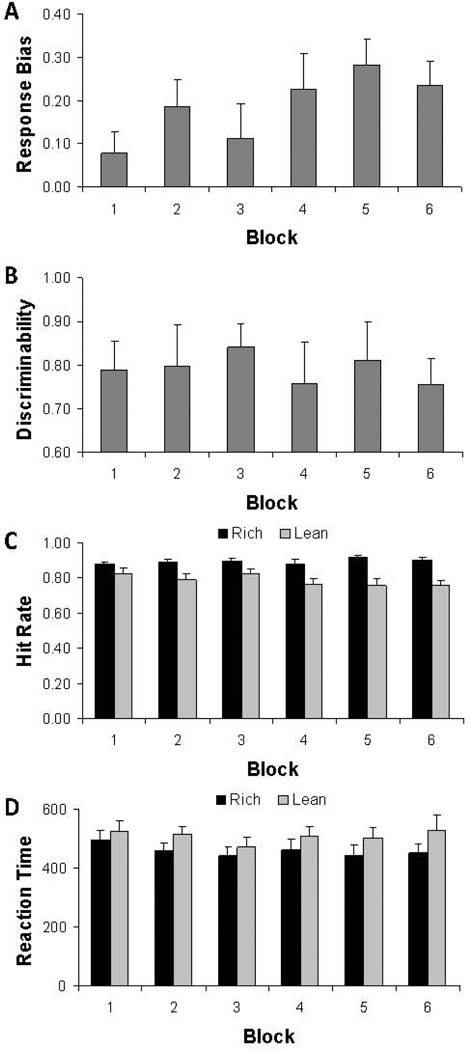Figure 2.
Task performance during the probabilistic reward task. Response Bias (A), discriminability (B), hit rate (C) and reaction time (in ms) (D) for the whole sample (n = 10). Error bars represent standard errors. For hit rate and reaction time, the rich condition (black bars) refers to the stimulus associated with more frequent reward, whereas the lean condition (light grey bars) refers to the stimulus associated with less frequent reward.

